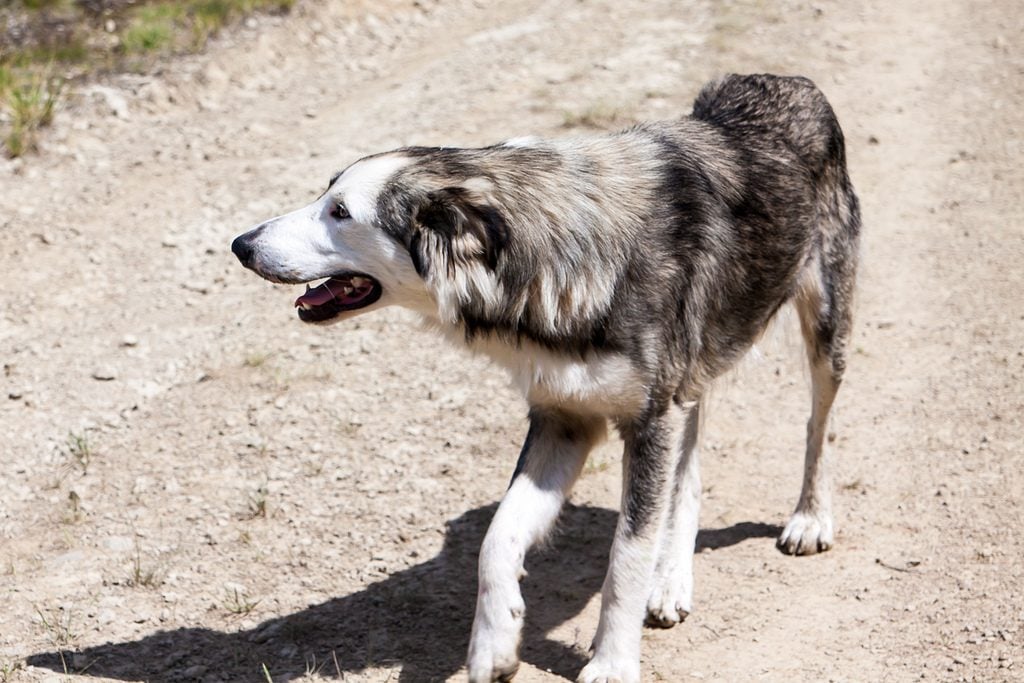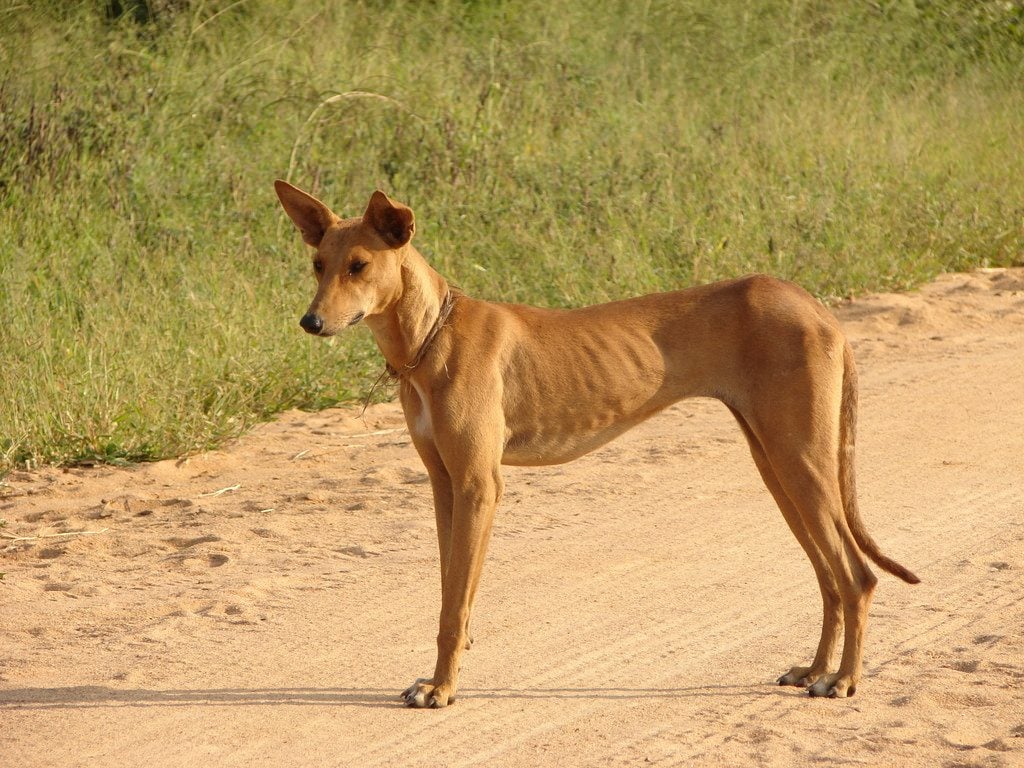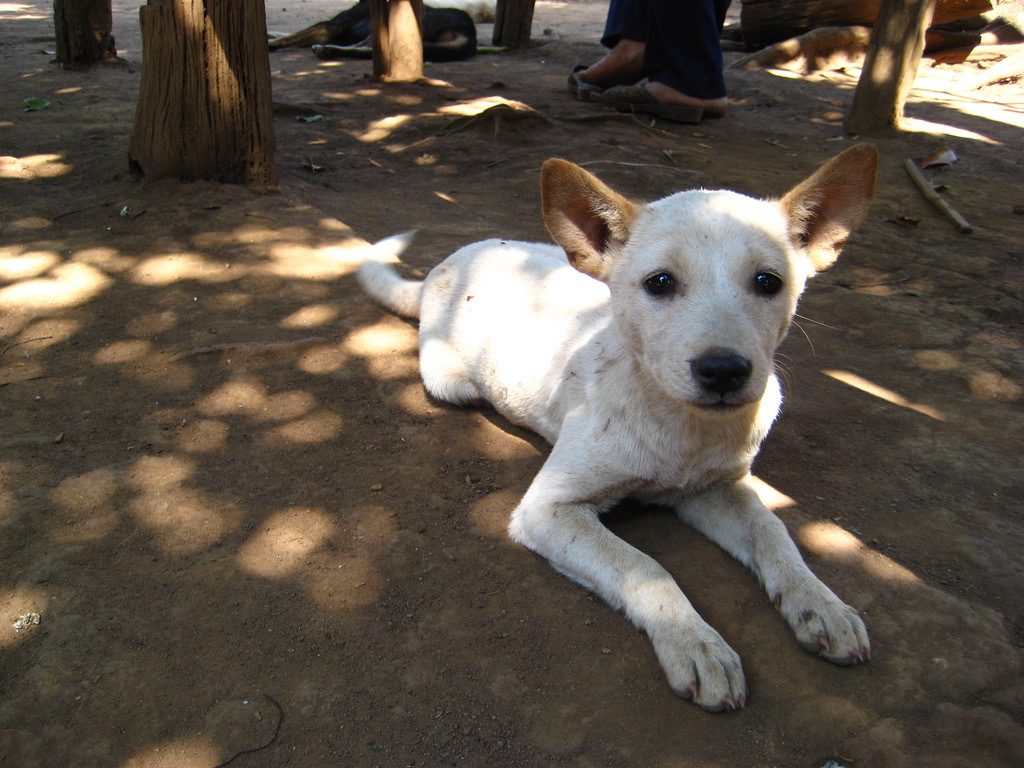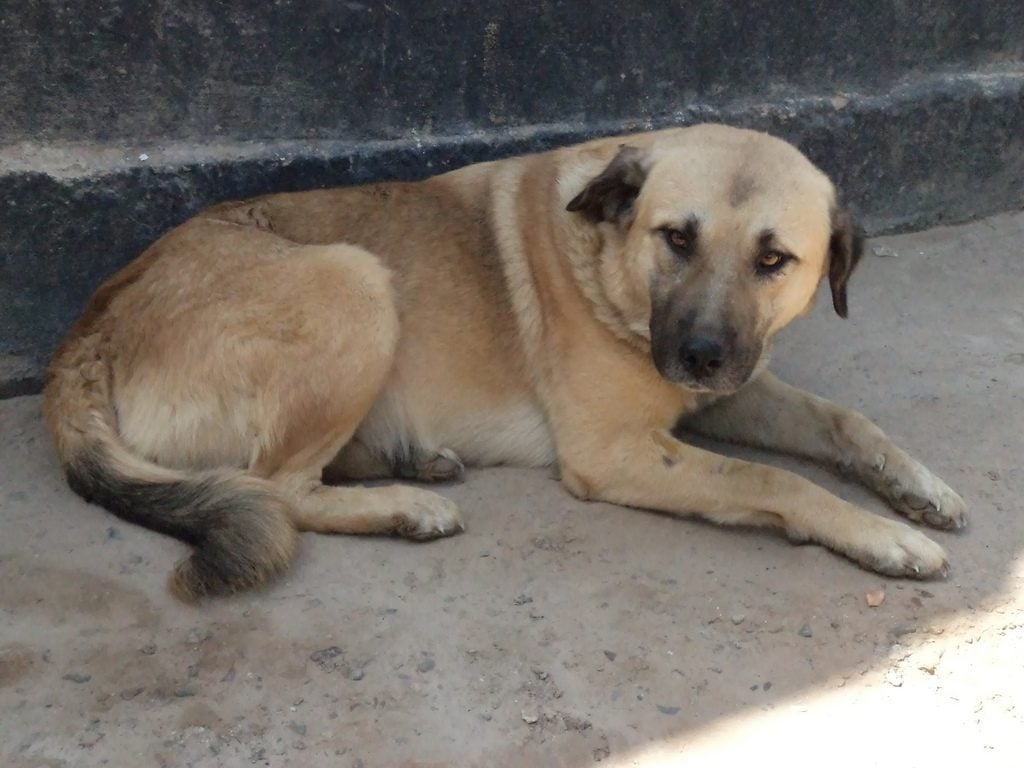- This post contains affiliate links. Read more here.
There are about 250 million pet dogs on the planet, and more than 420 recognized dog breeds (see: World Atlas of Dog Breeds). Sounds like a lot, right? But there are an estimated one billion dogs on earth. Once all the pets are counted up, that leaves 750 million dogs who aren’t domestic but aren’t quite wild animals (source).
These are village dogs, and their place in history and in our modern world is fascinating. Read on to learn more about village dogs!
Defining the Village Dog
It’s almost easier to define “village dogs” by what they’re not. Village dogs are not breeds created by humans, nor are they entirely breed-less. They’re not the same as strays or mongrels, and they’re not feral (i.e., completely unsocialized to humans). But they’re not exactly domesticated, either.
So what are village dogs? According to dog genetics expert Adam Boyko, “When you are looking at village dogs, you have something more akin to natural selection, albeit in an environment that’s managed by humans.”
In other words, they are semi-wild, semi-socialized canines living in or near human settlements. In fact, village dogs may be a living version of the ancient dogs who first chose to live alongside humans almost 15,000 years ago, well before human-directed artificial selection and breeding took over.
For an in-depth look at village dogs and the evolution of the modern dog, check out the groundbreaking book “What is a Dog?” by research partners and married couple Raymond and Lorna Coppinger.
Types of Village Dogs
Village dogs exist all over the world. In general, village dogs are mid-sized, with pointed snouts, pricked ears, and brownish coats.
The most common (and most studied) village dogs, all named/categorized for their geographic region, include:
Indian Pariah Dog

Image via Wikipedia
Indian Pariah Dogs live close to humans in the slums of cities, in remote villages, and elsewhere throughout the Indian subcontinent.
East Asian Village Dogs
Visitors to Thailand, Vietnam, and other Southeast Asian countries often note how free-roaming dogs live in harmony with human populations.
Central Asian Village Dog
Found in Central Asia, natch, these dogs have been genetically traced as direct descendants of the first domesticated dogs.
European Village Dog

Village dog in Romania via Flickr/ashenwolf
These shepherd-like village dogs live in mountainous regions of eastern Europe and the Balkans. They are closely linked to Asian village dogs and likely originated from the same ancient wild dogs.
African Village Dog

Mozambique village dog image via Flickr/tazebao
African village dogs are direct descendants of wild breeds that eventually “self-domesticated” alongside growing human populations across Africa. Breeds like the Basenji and Saluki were selectively bred and standardized from African village dogs.
Who Takes Care of Village Dogs?
The short answer: village dogs take care of themselves! To be more specific: although they’re not wild animals hunting prey, village dogs are savvy scavengers and know where to find food and water in the human-populated areas they inhabit. Of course, humans often help.
Village dogs have varied connections to human beings. Some live completely separate from people, around garbage dumps and other outskirts where they can survive on human waste without meeting humans themselves. Others are neighborhood dogs, seen and fed scraps by people who live in a particular area. Others may spend days out in the world scavenging for meals but come “home” at night to rest in the yard of, or even inside of, a human home. And yes, some village dogs are adopted by people and become fully domesticated over time.
From Village Dog to Landrace Dog to Purebred
Over time, village dogs kept as pets may be intentionally bred, leading to “landrace dogs.” A landrace breed is one that has been informally bred without a registry or breed standard.
Landrace dogs that originated as wild or village dogs include:
- Korean Jindo
- Taiwan Dog (also known as the Formosan Mountain Dog)
- Scotch Collie
- American Carolina Dog
Over time, humans have selectively bred landrace dogs, creating standardized, registered breeds. For example, the Korean Jindo, Saluki, and Thai Ridgeback all started as landrace dogs.
Village Dogs as Pets
Experts disagree over whether or not village dogs should be adopted as pets. In many places, dog overpopulation is a problem that carries human health risks, in addition to poor conditions for dogs. However, village dogs are self-sufficient, social animals living quite happily.
Those of us who tuck our pets into bed every night might struggle with the idea of free-roaming dogs. However, village dogs have thrived for generations on their own, and do not need human interference to “save” them. That said, these dogs are not “wild,” and they are often successfully adopted by humans.
If you’re interested in having a village dog of your own, keep an eye out for rescue groups that specialize in rescuing stray and street dogs from other countries. And if you already have a medium-sized, brownish dog with a pointy snout and pricked ears, consider a DNA test. You may already have a village dog and not even know it!



